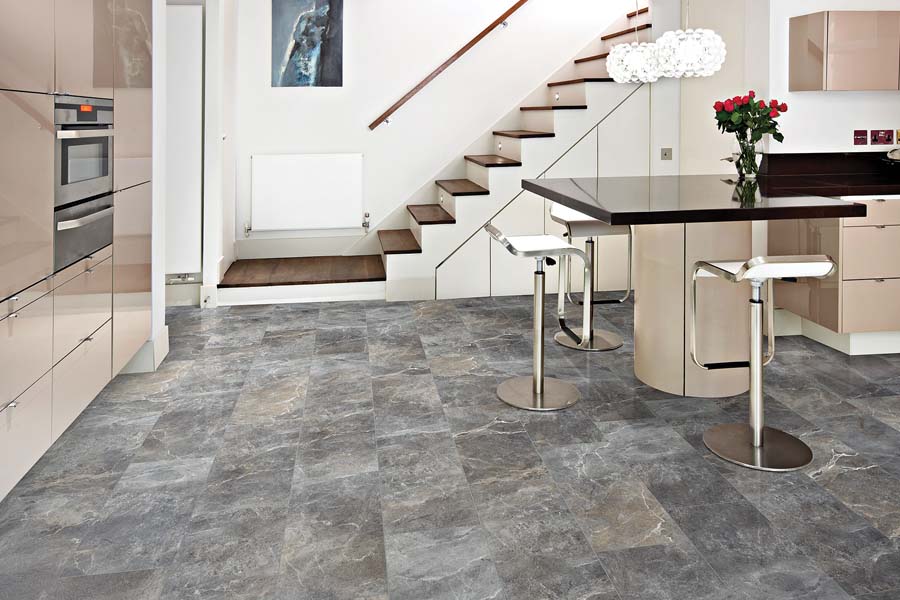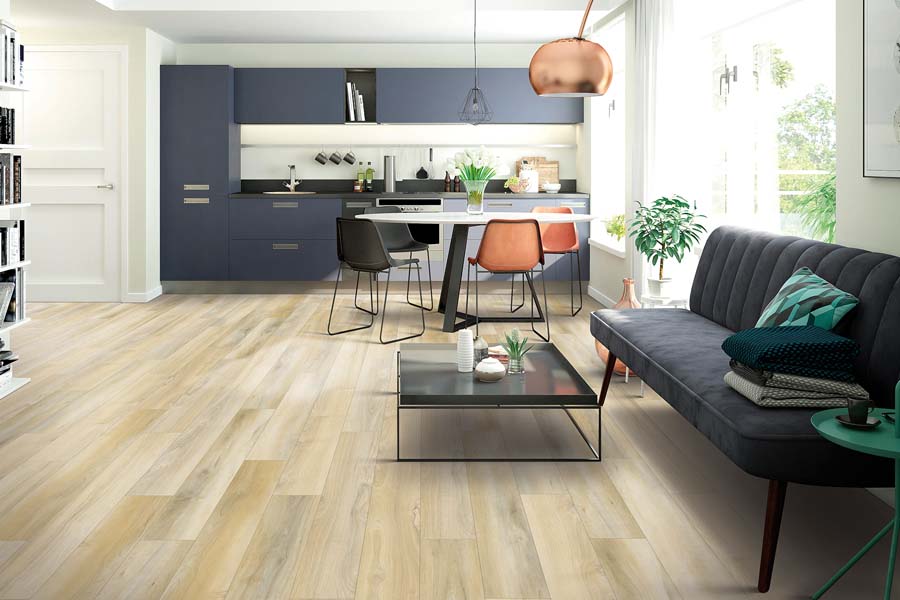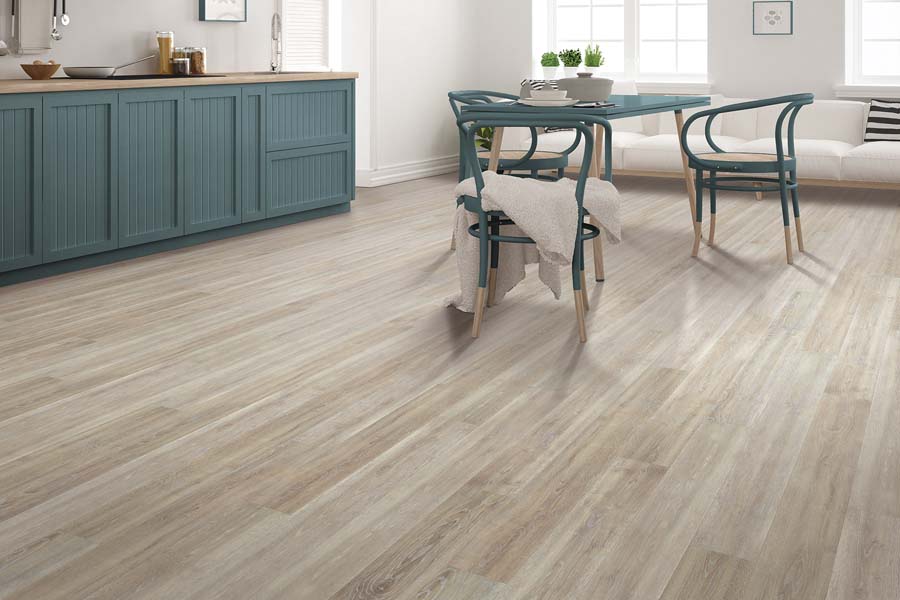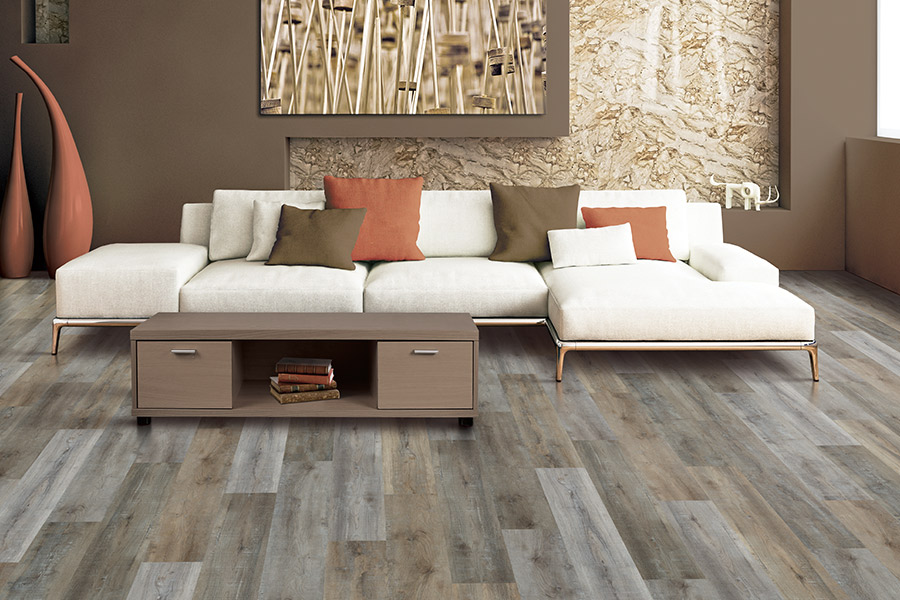What is LVP?
LVP is quickly becoming one of the most popular floors on the market today, with its realistic images, warm feel, and excellent pricepoint; its not hard to imagine why! We proudly serve Plymouth, CT, Plainville, CT, West Hartford, CT, Bristol, CT, Litchfield, CT, and Avon, CT.
Types of LVP
-
SPC (Stone Plastic Composite): SPC rigid core vinyl flooring is made from a mixture of limestone powder and PVC. It is known for its extreme durability, stability, and resistance to impact and heavy foot traffic. SPC rigid core vinyl flooring is also completely waterproof, making it ideal for use in areas with high moisture levels.
-
WPC (Wood Plastic Composite): WPC rigid core vinyl flooring is made from a mixture of recycled wood pulp and plastic. It is softer and more pliable than SPC rigid core vinyl flooring, making it more comfortable to walk on. WPC rigid core vinyl flooring is also waterproof, making it ideal for use in areas with high moisture levels.
-
MLF (Multi-Layer Flooring): MLF rigid core vinyl flooring is made from several layers of different materials, including a rigid core layer, a printed design layer, and a protective wear layer. It is known for its durability, stability, and resistance to scratches and stains.
-
Hybrid: Hybrid rigid core vinyl flooring is a combination of SPC and WPC technologies. It is designed to offer the best of both worlds, with the durability and stability of SPC rigid core vinyl flooring and the comfort and flexibility of WPC rigid core vinyl flooring.
-
Rigid Core LVT (Luxury Vinyl Tile): Rigid Core LVT is a type of vinyl flooring that features a rigid core layer for added stability and durability. It is designed to look and feel like natural stone or ceramic tile, and is available in a variety of styles and colors.
Get a Free Quote
Recommended Products
Triversa Prime is constructed with a phthalate-free stone polymer composite (SPC) solid core that provides, strength, durability and superior indentation resistance. Being completely waterproof and able to withstand wide temperature changes, it is the perfect solution for any area of your home. The wide selection of outstanding wood, stone and tile designs feature large scale formats, enhanced edge treatments, mixed widths and lengths, and much more.
SolidTech by Mohawk
Three stylish collections featuring realistic enhanced visuals and CleanProtect® antimicrobial technology.
A Quick History of LVP Flooring
-
The first vinyl flooring was developed in the 1930s and was primarily used in industrial settings.
-
In the 1960s, vinyl flooring became more popular for residential use due to its durability and ease of maintenance.
-
The first luxury vinyl tile (LVT) was introduced in the 1970s. It was thicker and more durable than traditional vinyl flooring and was designed to look like natural stone or hardwood.
-
In the 1990s, advancements in printing technology allowed for more realistic designs, including the ability to replicate the look of natural wood grains and textures.
-
The first luxury vinyl plank (LVP) flooring was introduced in the early 2000s. It featured a planks-shaped design and a tongue-and-groove installation system, making it look and feel more like real hardwood.
-
In recent years, luxury vinyl plank flooring has become increasingly popular due to its realistic look and feel, durability, and affordability compared to hardwood flooring. It is now available in a wide range of styles and colors, including designs that mimic reclaimed wood, exotic hardwoods, and even concrete.
Overall, luxury vinyl plank flooring has come a long way since its early beginnings, and is now a popular choice for homeowners and businesses alike.
Common Mistakes
-
Failing to properly prepare the subfloor: LVP flooring is designed to be installed over a flat, clean, and dry subfloor. Any bumps, dips, or debris can cause the flooring to be uneven or even buckle over time. Make sure to properly clean, level, and dry the subfloor before installation.
-
Not allowing for expansion and contraction: LVP flooring, like all flooring materials, can expand and contract with changes in temperature and humidity. Failure to leave proper expansion gaps around the perimeter of the room or near large obstructions can cause the flooring to warp or buckle over time.
-
Using the wrong adhesive: Some LVP flooring requires a specific type of adhesive to ensure proper bonding and stability. Using the wrong type of adhesive or failing to follow the manufacturer's instructions can result in a subpar installation.
-
Not properly acclimating the flooring: Before installation, LVP flooring should be acclimated to the room's temperature and humidity for a minimum of 48 hours. Failure to do so can cause the flooring to expand or contract after installation.
-
Using abrasive or harsh cleaning products: While LVP flooring is relatively easy to clean, using abrasive or harsh cleaning products can damage the surface and dull the finish over time. Always use a pH-neutral cleaner and avoid using excessive water.
By avoiding these common mistakes and following proper installation and maintenance procedures, LVP flooring can be a durable and attractive flooring option for years to come.

Care
-
Clean up spills immediately: Wipe up any spills or stains as soon as possible to prevent them from setting in. Use a soft cloth or mop and a gentle cleaner specifically designed for LVP flooring.
-
Sweep or vacuum regularly: Dirt, dust, and debris can scratch the surface of your LVP flooring, so it's important to sweep or vacuum the floor on a regular basis. Use a soft-bristled broom or a vacuum cleaner with a hard floor setting to avoid damaging the flooring.
-
Avoid using harsh cleaning products: LVP flooring is designed to be low-maintenance, so avoid using harsh cleaning products or abrasive tools that can damage the surface. Stick to a pH-neutral cleaner and avoid using excessive water. We recommend the Stonetech Luxury Vinyl & Laminate Cleaner as seen here in our store.
-
Use furniture protectors: Place felt or rubber protectors under the legs of furniture to prevent scratches and scuffs on the flooring.
-
Place doormats at entrances: Placing doormats at entrances can help prevent dirt and debris from being tracked onto your LVP flooring, which can reduce the need for frequent cleaning.
-
Avoid exposure to direct sunlight: LVP flooring can fade or discolor when exposed to direct sunlight over time. Consider using window treatments or blinds to prevent prolonged exposure to direct sunlight.












